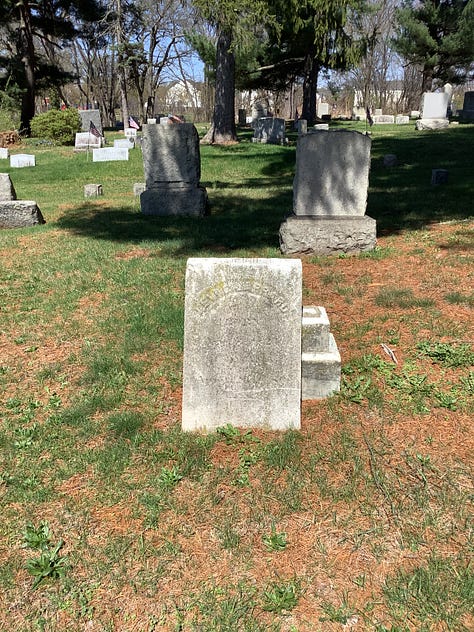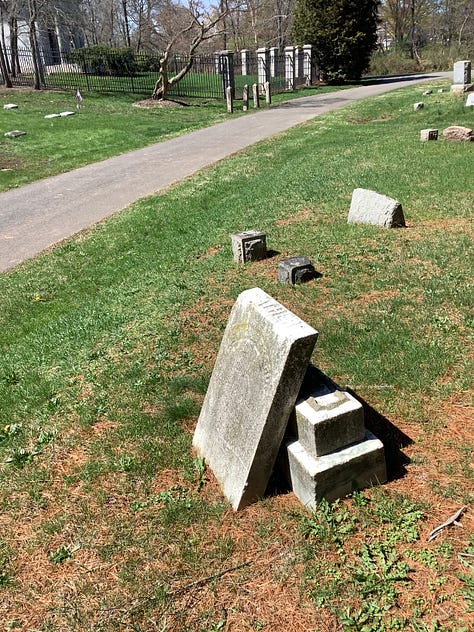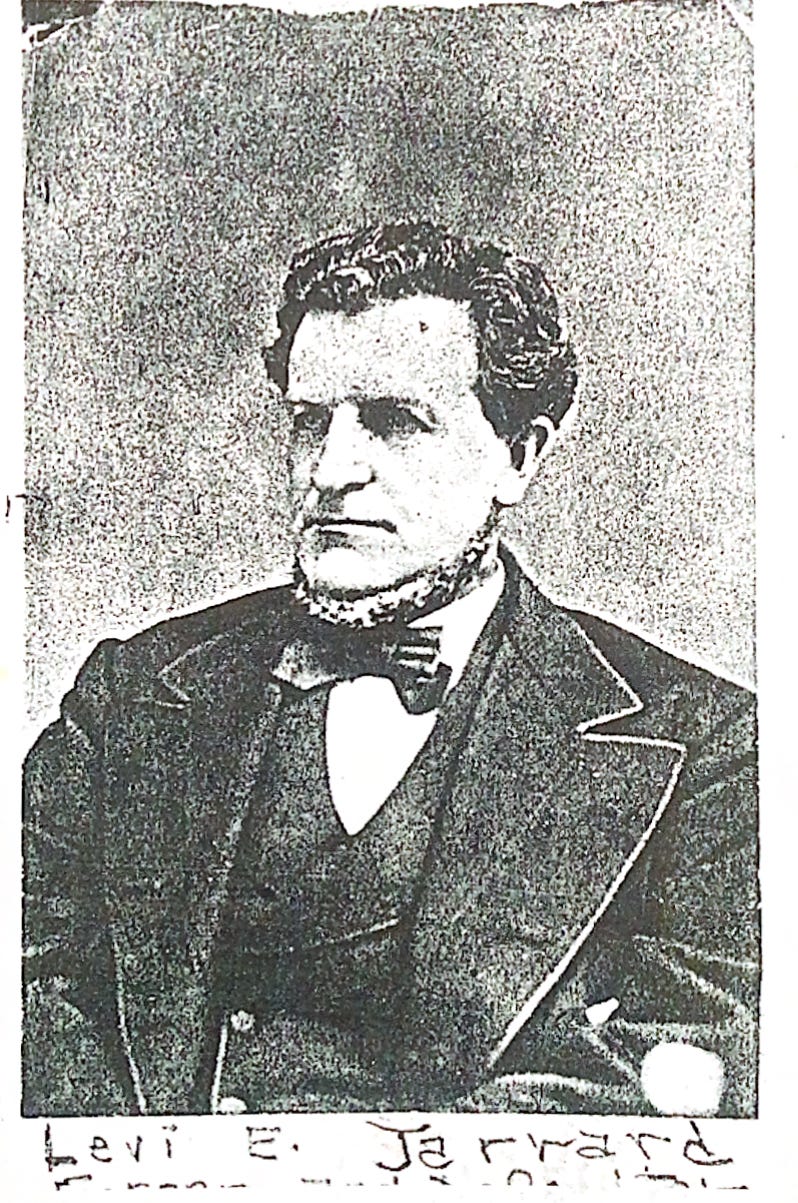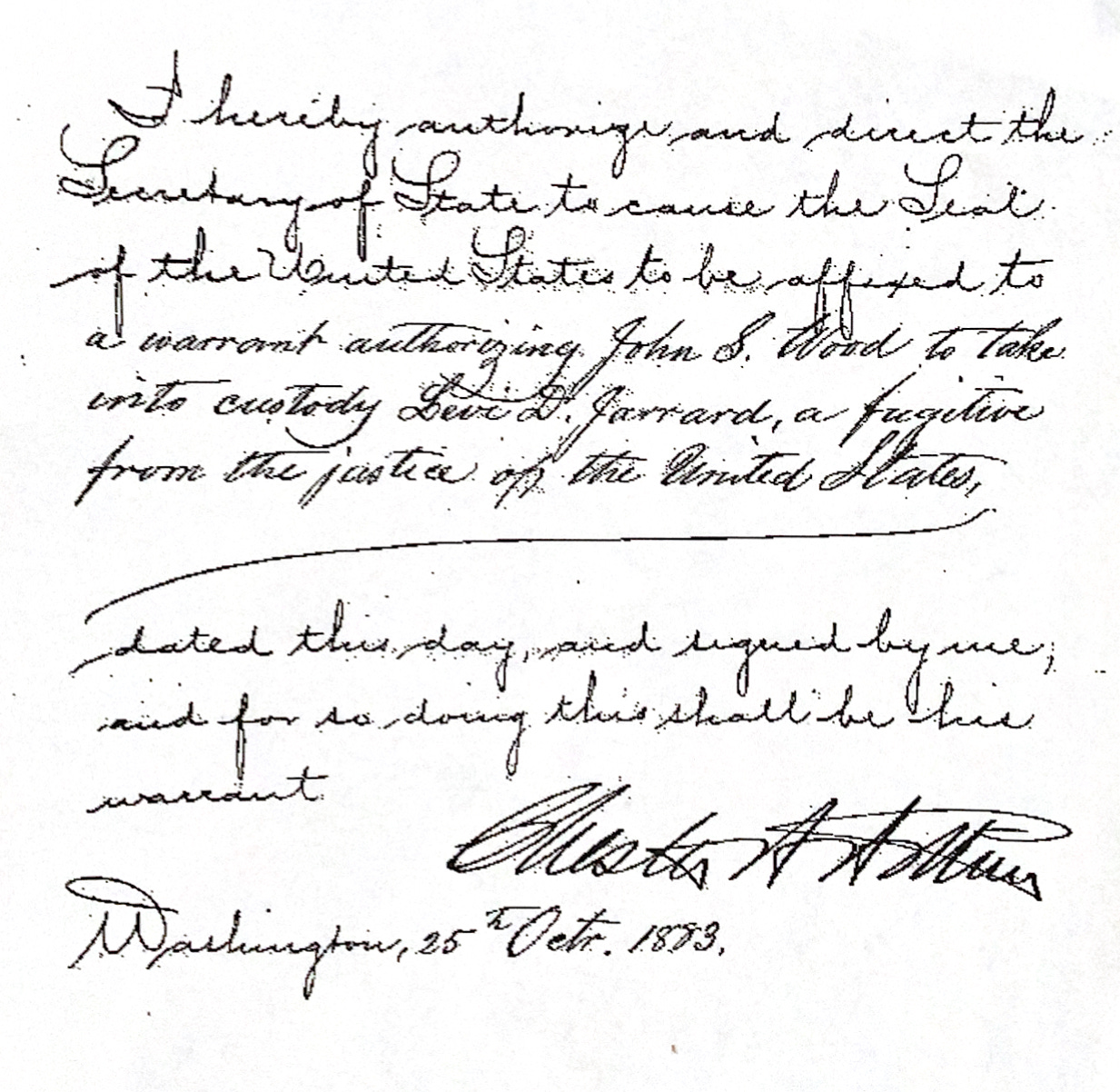As we are all aware, today is Tax Day, which I’m sure is nobody’s favorite holiday. It just so happens that Elmwood Cemetery has a tax collector of some historical note interred on our grounds. Consequently, I thought it would be as good a time as any to share the story of Levi Jarrard, who among many other things, was for a time a tax collector and postmaster. But while that certainly is a large part of his story, it would be wrong to leave his story there. Levi Jarrard lived a life too large to be described as one thing, In a sense, he was a mover and shaker, although that doesn’t always mean he used his energy for good.
In the past, Jarrard has been described as having a “Type A” personality. You might not have thought that initially if you had observed the early years of his life, which were rather quiet. He was born on August 3, 1828 in Sussex, NJ. It wouldn’t be until he reached adulthood that he would begin to strike out on his own. He would get involved in many various business ventures, including becoming a grocer, a builder, a hostler, and establishing a mule stable. The companies that made him most of his money, and the ones that he would be most known for, were his canal barge chandler business and his tug boat towing business.



He located these businesses by the lock of the Delaware and Raritan Canal , close to where any of his potential clients would be. His ship chandlery was so successful it was called one of the biggest in the state. These enterprises, established in 1850, the same year he moved to New Brunswick, would make Jarrard one of the most prominent businessmen in New Brunswick for the next twenty years. Already a success in business, Levi Jarrard would then begin a career in politics. It began with him running in 1857 to be a city alderman in New Brunswick, and he would hold that position through 1858.
In 1855, he would purchase land at 125 George Street and begin building a home for his family there. The property itself cost 20 thousand dollars and the building costs were an additional 80 thousand or so. All told, the work took around half a decade, but when it was finished it was one of the most beautiful homes in New Brunswick. This home still exists, as it is today College Hall, the centerpiece of the Douglass Campus at Rutgers. This property is also of note for us here at Elmwood because it was while Jarrard was living at that property that he would become neighbors with the first president of Elmwood Cemetery, D.G. Stubblebine.
Stubblebine had been in business with Jarrard for a time and had decided to purchase the property at 135 George Street, which is today the Cook/Douglass Writing Center at Rutgers. It actually served as the de facto cemetery office during the first few years of Elmwood’s existence, before we had built our current office. It is worth noting that Jarrard, as a friend of Stubblebine and as one of the most prominent businessmen in the city of New Brunswick at that time, would serve as one of the first board members for the cemetery as well.
Remaining active in Republican politics through the Civil War, Jarrard would begin the next journey in his political career when he was elected to the NJ General Assembly beginning in 1864. He would serve for five total terms in that body and would then turn his attentions to the other legislative body in New Jersey, the NJ State Senate. Ultimately, he would serve as a New Jersey Senator from Middlesex County from 1871 until 1876. It was at this point that he would begin serving as the county tax collector. As a popular and loyal member of the Republican Party for many years, it was not entirely surprising that in 1881 President Chester Arthur would appoint Jarrard as the Postmaster for the City of New Brunswick.
Unfortunately, this is where Jarrard’s story takes a tragic turn. While to this point Jarrard was known ands respected as a successful businessman and public servant, privately things weren’t going as well for him as he let on. According to Jarrard, his manor was rather expensive to live in, and he ended up behind on his taxes for the property. When he became the tax collector, he didn’t want to appear like “a tax delinquent,” so he “borrowed” some $39,000 dollars from the tax receipts to pay off his taxes. Since he was also the Postmaster, he was able to forge money orders quite easily. He claimed he was going to sell the house and move into a smaller home, and afterwards he would return the money he had taken. In May of 1883 he fled New Brunswick, and it soon became apparent what his crimes were. By June he had been formally charged and a manhunt was underway to find him. In fact, Chester Arthur personally signed a warrant for the arrest of Jarrard, making him, in a sense, one of America’s most wanted criminals at that time.
It turns out that Jarrard had abandoned his family and fled to Niagara Falls, Canada, where he hoped that staying in a foreign nation might protect him from legal reprisal. Two Pinkerton detectives found him furnishing a hotel room under a pseudonym and on August 1st he was accused by Canadian officials of forgery; he would be charged just months later and extradited back to New Jersey, where he was found guilty and sentenced to 10 years in New Jersey State Prison in Trenton. He would be unable to serve his while sentence, as Levi Jarrard passed away on April 26, 1886, apparently from tuberculosis. It was quite the fall from grace; for all of his accomplishments, Levi Jarrard’s name it shall forever be stained with the story of his embezzlement.
Sources:
"A Cool New Jersey Defaulter." The New York Times. August 8, 1883.
“Collector Jarrard Sentenced." The New York Times. April 30, 1884.
“Chester A. Arthur.” RR Auction, 2003. https://www.rrauction.com/auctions/lot-detail/304595202735-chester-a-arthur/.
“Descendants of Isaac Jarrard.” RootsWeb. Accessed April 9, 2025. https://homepages.rootsweb.com/~jennings/jarrardis.htm.
Historic American Buildings Survey, Creator. Rutgers University, Levi D. Jarrad House, George Street, New Brunswick, Middlesex County, NJ. Middlesex County New Jersey New Brunswick, 1933. Documentation Compiled After. Photograph. https://www.loc.gov/item/nj0112/.
“Jarrard Convicted of Forgery." The New York Times. April 26, 1884.
”Jarrard - Whole Story.” The New York Times. August 30, 1883.
“Jarrard, Levi D., House.” New Brunswick, NJ: National Register of Historic Places, April 22, 1982. https://npgallery.nps.gov/AssetDetail/e55d7249-5c47-475d-8513-4438a5e83b6d#.
Journal of the Executive Proceedings of the Senate of the United States of America. Vol. XXIII. Washington, DC: Government Printing Office, 1901.
The Ontario Reports: Containing Reports of Cases Decided in the Queen's Bench and Chancery Divisions of the High Court of Justice for Ontario. Toronto: Rowsell & Hutchison, 1884.





